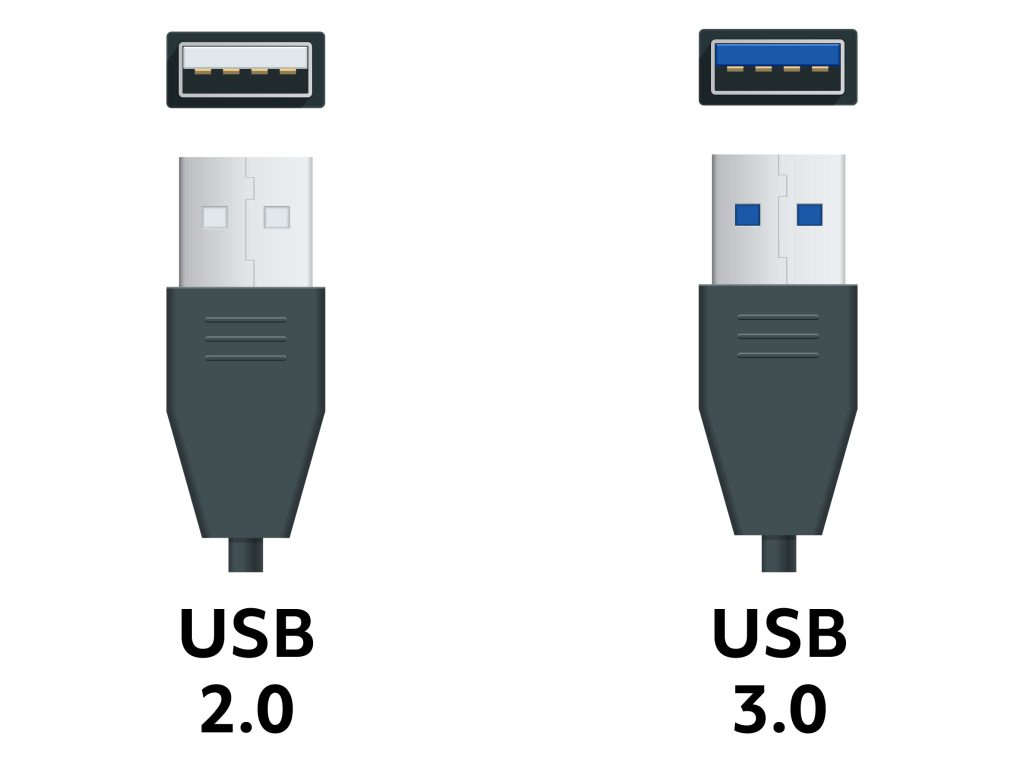
USB, 2.0, and 3.0 technology has advanced quite a bit over the past ten years. 2.0 is the generalized USB technology most people are used to seeing—the standard 2.0 has the white box inside the connector head. 3.0 is the upgraded model and is quickly becoming the new standard because it is much more efficient than its predecessor. Easily identified, USB 3.0 has the blue box in the connector head.
USB 2.0 was released onto the market back in April 2000. It quickly became the most used data transfer device commercially. There were many variations of the USB 2.0 cable. These different configurations allowed you to connect almost any device and begin the transfer process. 2.0 is the most recognizable computer cable on the market, with more sold than any other cable besides a CAT5.
USB 3.0 was released onto the market back in November 2008. 3.0 was a gigantic technological jump in terms of raw data transferring ability. Like its predecessor, The 3.0 had many variations of the cables allowing for specific technical needs. USB 3.0 has more than double the speed of the 2.0 while maintaining reliability and ease of use.
One of the most significant differences between 2.0 vs. 3.0 is the transfer speeds. A standard 2.0 USB transfer speed is about 480 Mbps. 3.0 USB transfer speeds are about 4.8 Gbps. That is roughly ten times faster. Allowing for many more possibilities and uses for the 3.0 configuration. On top of that, USB 3.0 allows for a larger bandwidth of power, allowing you to not only charge faster but allowing you to charge more devices on one USB connection.
If you still have questions, call us, and we can help you figure out which version of USB would work best for you!






